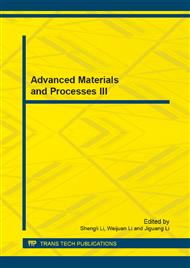p.887
p.891
p.897
p.901
p.909
p.914
p.920
p.925
p.930
Hot Stamping of Two Different High Strength Steel with Tailored Properties
Abstract:
With the increasingly widespread application of high-strength steel (HSS), tailored properties, namely different mechanical properties required in different regions of the same part, have been proposed, in order to achieve the matching between mechanical properties and safety performance of motor vehicle parts. In this paper, the influence of air gap on the final hardness and strength distribution is discussed in terms of two different HSS, namely LG1500HS and WHT1500HF. As for steel LG1500HS, regardless of the location of samples in the formed part, the final fracture area is in the vicinity of the air gap center, proving the lowest hardness and strength in transition zones. Compared to steel LG1500HS, steel WHT1500HF exhibits gradient hardness distribution from the cooling zone to the heating zone, with no minimal value discovered in transition zones.
Info:
Periodical:
Pages:
909-913
Citation:
Online since:
September 2013
Authors:
Keywords:
Price:
Сopyright:
© 2013 Trans Tech Publications Ltd. All Rights Reserved
Share:
Citation:


